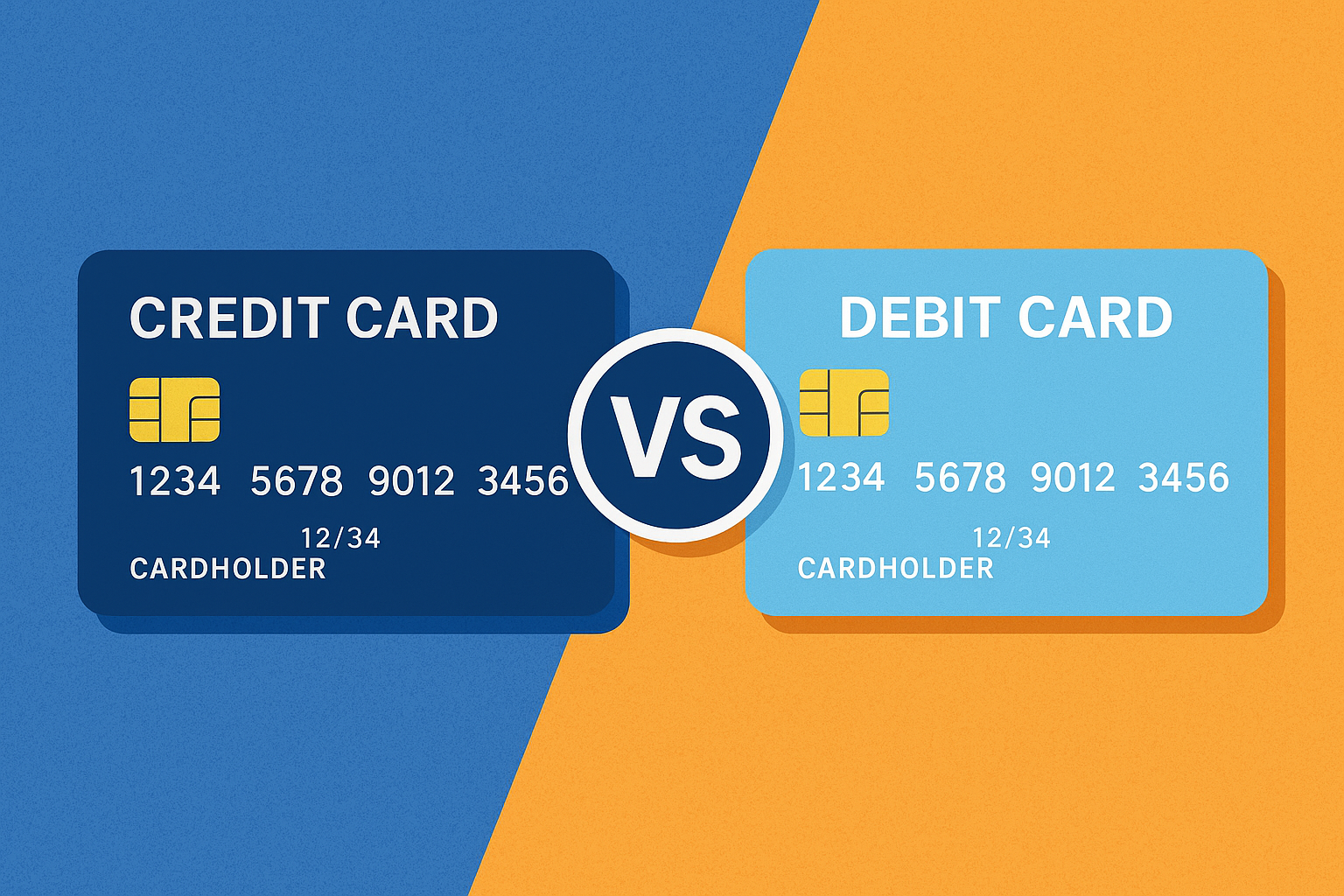When you’re standing at the checkout counter and the cashier asks, “Credit or debit?” you might not think twice before swiping or tapping your card. After all, both credit cards and debit cards are small, plastic rectangles that give you access to money. However, the truth is, they work in very different ways—and understanding those differences is crucial for making smart financial decisions.
Whether you’re new to managing money or just want a refresher, let’s break down the similarities, differences, pros, and cons of credit cards versus debit cards.
How Debit Cards Work –
A debit card is directly connected to your checking account. When you use your debit card for a purchase, the money is immediately (or very quickly) deducted from your account balance. In other words, you are spending money you already have.
- Source of funds: Your checking account
- Interest charges: None, because you’re not borrowing money
- Best for: Everyday purchases, budgeting, and avoiding debt
Debit cards also work at ATMs for withdrawing cash and sometimes for depositing money, depending on your bank.
How Credit Cards Work –
A credit card is essentially a short-term loan from a bank or credit card company. Instead of withdrawing your own money right away, you borrow money up to a certain limit (your credit line). You’ll receive a monthly bill listing your purchases, and you can choose to pay the balance in full or make smaller payments over time.
Get Started With a Free Debt Analysis
We make it easy on mobile or desktop. FREE with no obligations.
- Source of funds: The credit card issuer (borrowed money)
- Interest charges: Applied if you don’t pay the balance in full each month
- Best for: Building credit history, earning rewards, and handling emergencies
Credit cards usually offer additional benefits such as fraud protection, travel insurance, and rewards programs—but they can also lead to debt if not used responsibly.
Key Differences Between Credit and Debit Cards
Here’s a side-by-side comparison to make things clearer:
| Feature | Debit Card | Credit Card |
| Where money comes from | Your bank account | Borrowed from credit card issuer |
| Spending limit | Limited to account balance | Limited to the credit line |
| Interest charges | None | Charged if the balance is not paid in full |
| Credit impact | Doesn’t build credit | Helps build credit if used responsibly |
| Fraud protection | Basic, but funds can be tied up during disputes | Stronger protections under federal law |
| Rewards & perks | Rare | Common (cashback, points, miles) |
| Best use | Everyday spending and budgeting | Building credit, emergencies, and large purchases |
Advantages of Debit Cards:
- No debt risk: You can only spend what you have.
- No interest charges: Since you’re not borrowing, there’s no interest to worry about.
- Great for budgeting: Helps control overspending.
- Easy access to cash: Works as an ATM card.
Possible downsides: Limited fraud protection compared to credit cards, and using a debit card won’t help you build credit history.
Advantages of Credit Cards:
- Builds credit: Responsible use (paying on time, keeping balances low) improves your credit score.
- Fraud protection: Stronger protections under federal law, with less risk of losing your own money while disputes are being resolved.
- Rewards and perks: Many cards offer cashback, travel points, or discounts.
- Emergency cushion: Provides access to funds when you don’t have enough cash immediately available.
Possible downsides: Easy to overspend, high-interest rates if balances aren’t paid in full, and potential for debt to spiral if unmanaged.
When to Use a Debit Card vs. a Credit Card:
Debit Card is better for:
- Everyday expenses (groceries, gas, coffee)
- People who want to avoid debt
- Staying within a budget
Credit Card is better for:
- Online shopping (added fraud protection)
- Large purchases where rewards or warranties apply
- Building or improving your credit history
- Emergencies when you don’t have cash on hand
Tips for Using Credit and Debit Cards Wisely:
- With a debit card:
- Always monitor your account balance to avoid overdraft fees.
- Set up account alerts to track spending.
- Use it primarily for small, everyday expenses.
- With a credit card:
- Pay your balance in full every month to avoid interest charges.
- Don’t spend more than you can afford.
- Keep your credit utilization below 30% of your limit.
- Use rewards cards strategically, but avoid chasing perks at the expense of debt.
In Conclusion –
Both credit and debit cards can be powerful financial tools—but they serve very different purposes. A debit card helps you stay grounded in the money you actually have, while a credit card lets you borrow and build credit when used responsibly.
The key is to use them wisely: rely on debit for everyday purchases and budgeting, and use credit to strengthen your credit score, protect yourself from fraud, and cover unexpected expenses, if you don’t have an emergency savings.
If you’re struggling with credit card debt or need help managing your money, remember—our certified credit counselors are here to guide you toward a healthier financial future. Give us a call at 1-866-699-2227 or visit us online at https://www.advantageccs.org.
